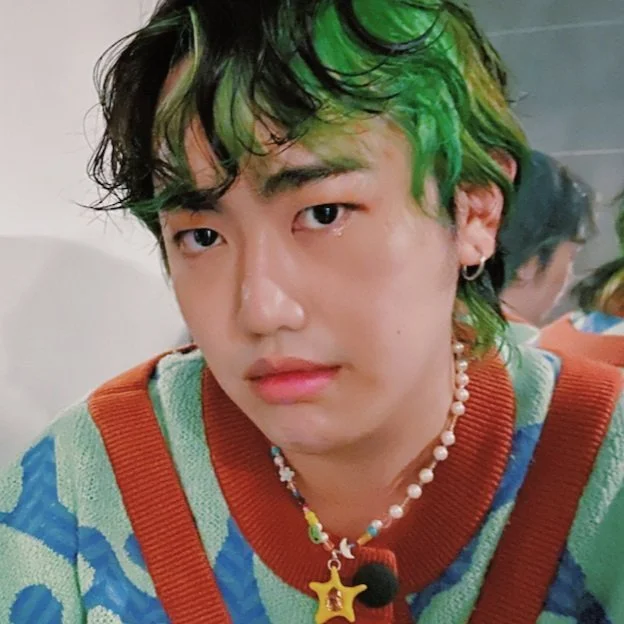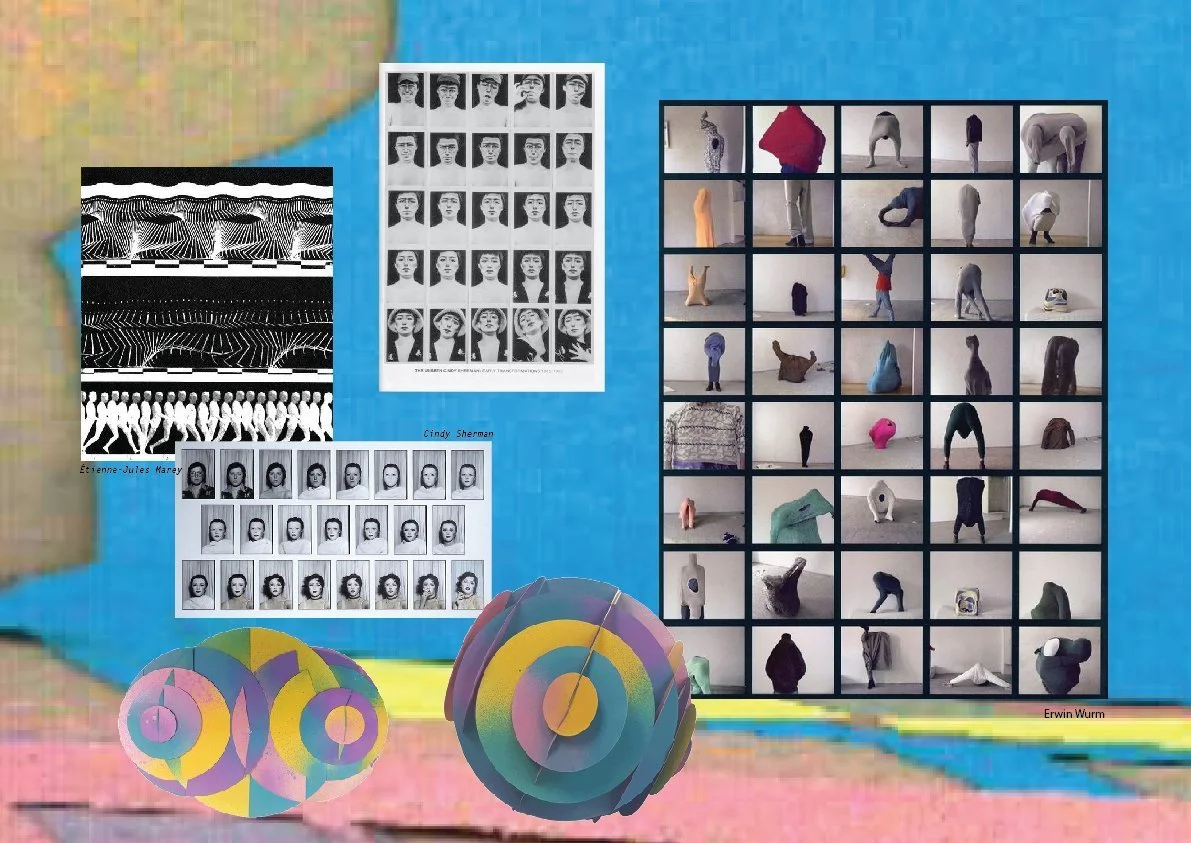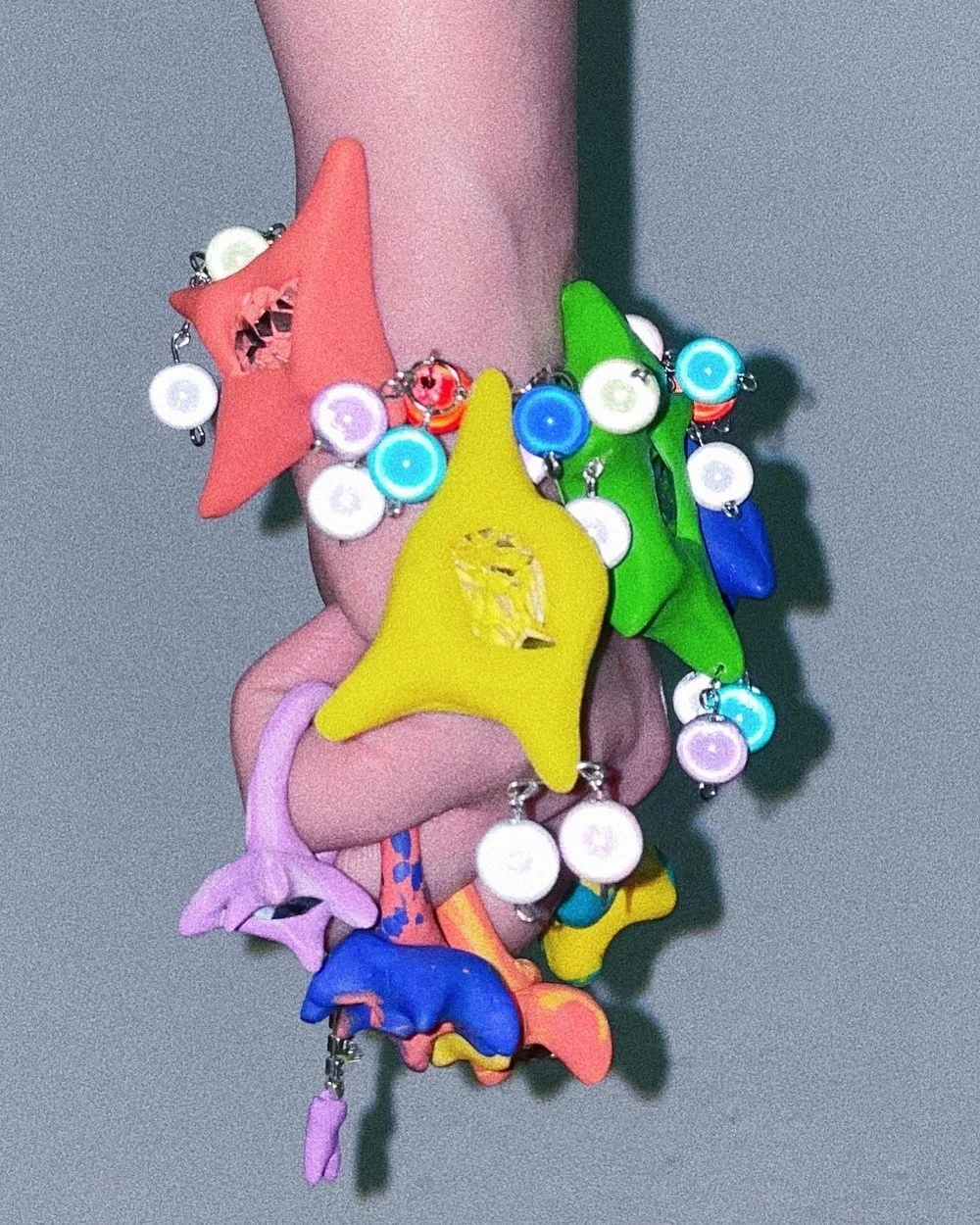Fresh Faces: Money Wang
Seremban-based textile and print designer on creativity in the age of Covid
F&M FRESH FACES is a series featuring young Southeast Asian fashion practitioners and speaks with them about how they embarked on their careers and what propels them as creatives.
Money Wang.
Money Wang is textile and print designer based in Seremban, Malaysia, who graduated from Central Saint Martins with a degree in textile design in 2020. Money’s practice has since ventured from designing two-dimensional prints to wearable accessories. Experimentation and playfulness sit at the heart of his works, often oscillating between various media. As one of many young creatives graduating in a pandemic, Money’s practice doubles as a source of meditative comfort amidst uncertainty.
How would you describe your design language and ethos?
I believe it is bold, colourful, and in-your-face sometimes. I love experimenting to find an end result, and surprising myself with something I might not have initially thought about. I am constantly researching new techniques and processes, such as sculpting and laser-cutting.
What drew you to focus on textile and print design in the first place? How did your time at Central Saint Martins influence your approach to craft?
In the beginning, I stumbled upon it by chance, then later fell in love with making. I was initially insistent on fashion design, but going through the foundation course at Central Saint Martins helped me realise that I was much better suited for textile design. The course unearthed my love for experimentation.
Visual research for ‘The Possibilities of Transformation’, 2020. Image courtesy of Money Wang.
You have cited the likes of contemporary artists Len Lye and Erwin Wurm as influences in your work. What about their practices inspires you?
I was drawn to their process and how they convey and interpret their stories and thoughts, such as how Lye uses film and drawing to turn moving images into music; and how Wurm creates sculptures that relate to the body, space and objects.
Can you take us through your creative process from inspiration, research to execution? Do you have a specific playlist or a particular location you like to work from, for example?
It usually begins with a starting point inspired by either current events or themes I am interested in at the time. They can be very random, ranging from the idea of sustainability, alternative uses of pigment; or even something as personal as a haircut. And through secondary research, I come up with a concept. I then start experimenting to decide which processes complement the research. Often, there will be a wide range of research and process, and I narrow these down by merging them in unexpected ways. For example, having my friends move in a sweater and translating their movements into shapes, which can then be expressed visually into a print.
‘The Possibilities of Transformation’, 2020. Image courtesy of Money Wang.
Your graduation collection ‘The Possibilities of Transformation’ used various techniques such as photocopying, animation and laser-cutting leftover textiles. What were you hoping to convey or achieve with these techniques?
The combination of various techniques were born out of the experimentation in my research, and I was hoping to capture the in-betweenness of transformation.
As a textile and print designer by training, what prompted you to venture into accessories and wearable objects?
I believe textiles to be very versatile and I try not to limit myself to a material’s typical form or function. It could be a photograph that inspired a sculpture, then turned into an illustrative print, then re-photographed. This constant translation of media interests me.
“I believe textiles to be very versatile and I try not to limit myself to a material’s typical form or function. It could be a photograph that inspired a sculpture, then turned into an illustrative print, then re-photographed. This constant translation of media interests me.”
Accessories by Money Wang. Image courtesy of Money Wang.
Accessories by Money Wang. Image courtesy of Money Wang.
Given the handmade nature of your accessories, there is a decidedly slower and more conscious pace to your process. What is your personal relationship to your handmade works?
My accessories were all made during lockdown, and I was having quite a depressing time. I have had polymer clay as a potential material to work with at the back of my mind for some time, and when I finally did, it was very meditative. It boosted my emotions and lifted my mood significantly. I think a lot of my work calms me down, and the meditative quality is a key feature of my process.
You interned at Kenzo and Typical Freaks during your time at university. How did your experience at these labels shape your practice?
My experience at these labels made me more assured of myself as a designer and as an artist. They taught me how to have fun, but to also find balance by being realistic about my ideas.
How has working against the backdrop of Covid-19 and closures in Malaysia affected the way you work?
It was mentally draining and killed all of my drive to work, but I have since regained a little traction since the lockdown lifted. Making and being hands-on again helped tremendously.
‘The Possibilities of Transformation’, 2020. Image courtesy of Money Wang.
As a young creative, what do you hope to see more of in our regional fashion landscape?
I would like to see more accessibility and opportunity — these do not even have to be on a big scale. I am witnessing a lot of it happening, slowly but surely. Also individuality! Making something unique is sometimes easier than we imagine it to be.
‘Paper clay vase with foam flowers’, 2021. Image courtesy of Money Wang.
Collaboration with graphic designer, Valen Lim, 2021. Image courtesy of Money Wang.
What plans do you have in store for your practice moving forward?
I plan on starting a website to sell my objects, and launching my studio. I am very excited to be getting back on the horse, and to start making again. I look forward to realising the ideas I have stored in my mind. The possibility of branching out into other creative fields such as ceramics, homeware and furniture is also on the horizon.
Visit @mrmoneywang on Instagram to check out Money Wang’s latest work.








